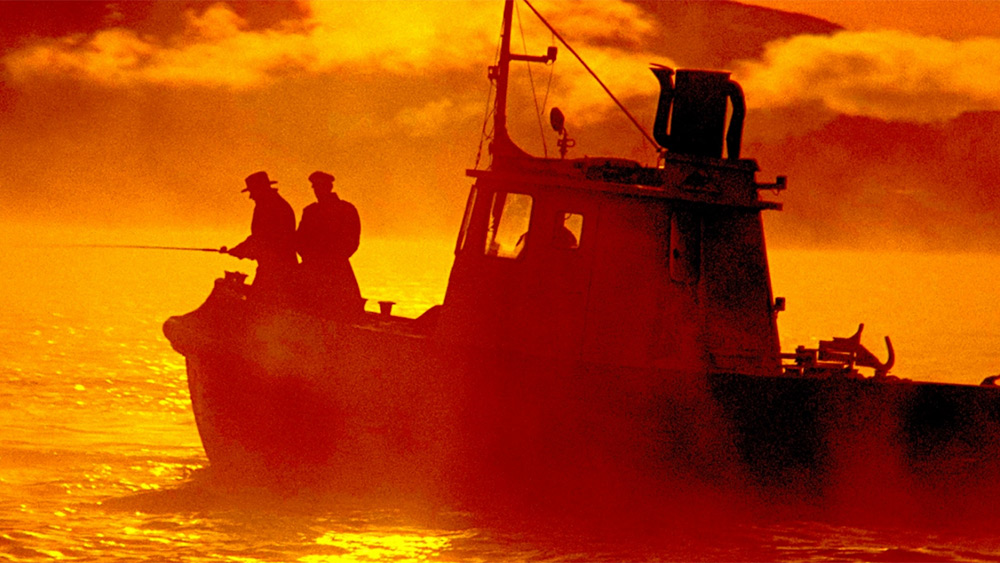Rob Tregenza’s The Fishing Place (2025) is a mesmerizing work of slow cinema. The director, who served as a cinematographer for Béla Tarr and Ágnes Hranitzsky’s Werckmeister Harmonies (2000), is an expert at long, languid takes. In his new film, he uses them with a freshness and unpredictability; in turn, weaving a narrative of brooding power. The film’s story is fairly small in its scope. A Nazi officer tasks a housekeeper (Ellen Dorrit) with observing and reporting on a priest (Andreas Lust) in the rural Norwegian town of Telemark. Within the bounds of this minimal narrative emerges a complex web of moral conflicts and personal demons that Tregenza emphasizes with a Brechtian approach to his drama. The housekeeper and the priest struggle with the roles they must play under the Nazi occupation; Tregenza’s tortured performers wander through the frame like living ghosts. His lens is always searching or gliding through space, patiently observing stillness or catching important narrative and emotional moments, sometimes just barely, before his camera continues its endless journey.
At times, the verisimilitude of Tregenza’s long takes and reframing is disrupted by poetic gestures, such as when the SS officer in the film decides to stick a revolver in his mouth. This slow and deliberate action feels like an extension of the officer’s intentional tumble into an open grave earlier in the film, which can be read as a dramatization of his own unconscious death drive, or that of the Nazi ideology itself. These dramatic gestures beg further reading on an explicitly semiotic level. To quote the Argentine writer Jorge Luis Borges in his essay on Nazism, “A Comment on August 23, 1944”: “Nazism suffers from unreality, like [John Scotus] Erigena’s hell. It is uninhabitable; men can only die for it, lie for it, wound or kill for it. No one, in the intimate depths of his being, can wish it to triumph.”
The Fishing Place’s final chapter, which follows the patterns of known wartime dramas such as Roberto Rossellini’s Rome, Open City (1945), sees Tregenza pull back to show the audience how his film was made. He shows how the first AD flits about and actors are put in place for each shot. This decision carries out a Brechtian distancing effect of the most radical kind. Tregenza observes the banal goings-on of movie-making from behind-the-scenes with his patented long take, the most Tarr-like in The Fishing Place, while the viewer is stunned with the unreal introduction of the real into the film. Maybe, in a sense, it’s a way of plunging into the depths of The Fishing Place’s unconscious. In this final chapter, like in the poetic interludes that preceded it, the phenomenological foundations of Tregenza’s film are laid bare. Perhaps Tregenza is showing us how we all play roles, even in the most dire of circumstances or contexts—whether in the benign making of a film, or in the deep horrors of war and fascism. But his bold turn isn’t unprecedented, as it recalls the entire thrust—sometimes explicit (Contempt, 1963), sometimes implicit (Breathless, 1960)—of Jean-Luc Godard’s corpus. Godard was an early admirer of Tregenza’s debut film, Talking to Strangers (1988); so much so, that he produced the director’s next two films. For Tregenza, as in the films of Godard and the reflexive work of William Greaves, the filmmaking process expresses the making of reality as metaphor; each filmmaking choice—individual or collective—presents a discrete crucible of creation.
The Fishing Place screens this evening, February 7, and until next week, at the Museum of Modern Art.



